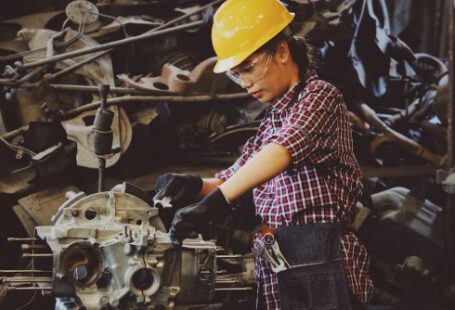The proper use of safety gloves is essential in construction projects. Whether it’s for protection against hazardous chemicals, sharp objects, or extreme temperatures, the right pair of gloves can be the difference between a successful project and serious injury. In this article, we’ll examine the different types of safety gloves available and discuss how to choose the right pair for your project.
Types of Safety Gloves
There are several types of safety gloves available for construction projects. Depending on the type of job, different gloves may provide more protection than others. The four main types are:
- Cut-resistant gloves
- Chemical-resistant gloves
- Heat-resistant gloves
- Anti-vibration gloves
Cut-resistant gloves are designed to protect against sharp objects and blades. They are typically made of Kevlar, a synthetic fiber that is five times stronger than steel. These gloves are designed to be lightweight and flexible, so they won’t hinder movement or dexterity.
Chemical-resistant gloves are used to protect against hazardous chemicals and solvents. These gloves are made of materials such as neoprene, nitrile, or latex. They are designed to be durable and provide a tight seal against the skin, ensuring that chemicals cannot come into contact with the user.
Heat-resistant gloves are designed to protect against extreme temperatures. These gloves are usually made of leather or fabric and are designed to be fireproof. They are also highly breathable, allowing air to circulate and preventing the user’s hands from becoming too sweaty.
Anti-vibration gloves are designed to reduce the vibration caused by heavy machinery and power tools. These gloves are usually made of rubber or leather and are designed to absorb the shock and reduce the amount of vibration that reaches the user’s hands.
Choosing the Right Gloves
When choosing the right pair of gloves for a construction project, it is important to consider the type of job and the environment in which it will be performed. Different gloves offer different levels of protection, so it is important to choose the right pair for the job.
The first step is to determine the type of protection that is needed. If the job involves hazardous chemicals, chemical-resistant gloves should be used. If the job involves extreme temperatures, heat-resistant gloves should be chosen. If the job involves sharp objects or blades, cut-resistant gloves should be used.
It is also important to consider the environment in which the job will be performed. If the job is being done outdoors, the gloves should be breathable and lightweight to ensure that the user’s hands do not become too hot or sweaty. If the job is being done in a cold environment, the gloves should be insulated and waterproof to ensure that the user’s hands stay warm and dry.
Finally, it is important to consider the fit of the gloves. Gloves that are too loose or too tight can be uncomfortable and may not provide the necessary protection. It is important to choose gloves that fit snugly but are not too tight. The gloves should also allow the user to move their fingers freely without any restrictions.
Conclusion
Safety gloves are essential for any construction project. Different gloves provide different levels of protection, so it is important to choose the right pair for the job. It is important to consider the type of job, the environment in which it will be performed, and the fit of the gloves when choosing the right pair. With the right safety gloves, construction projects can be completed safely and efficiently.






